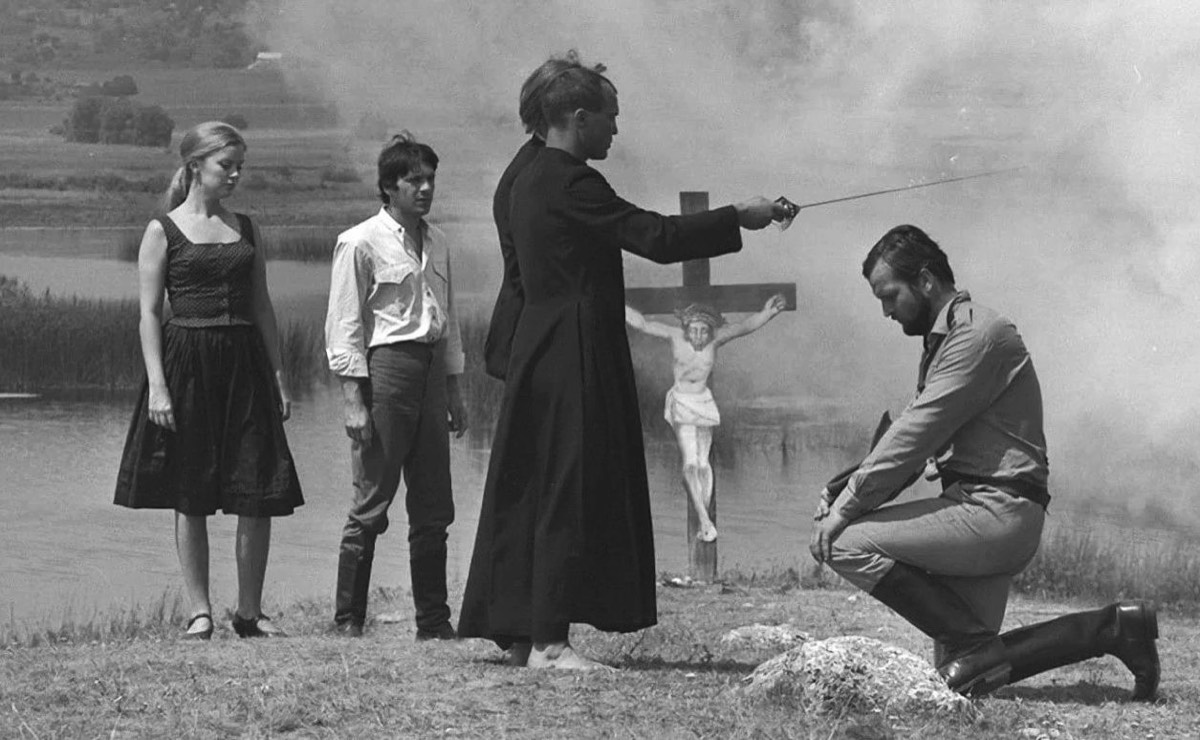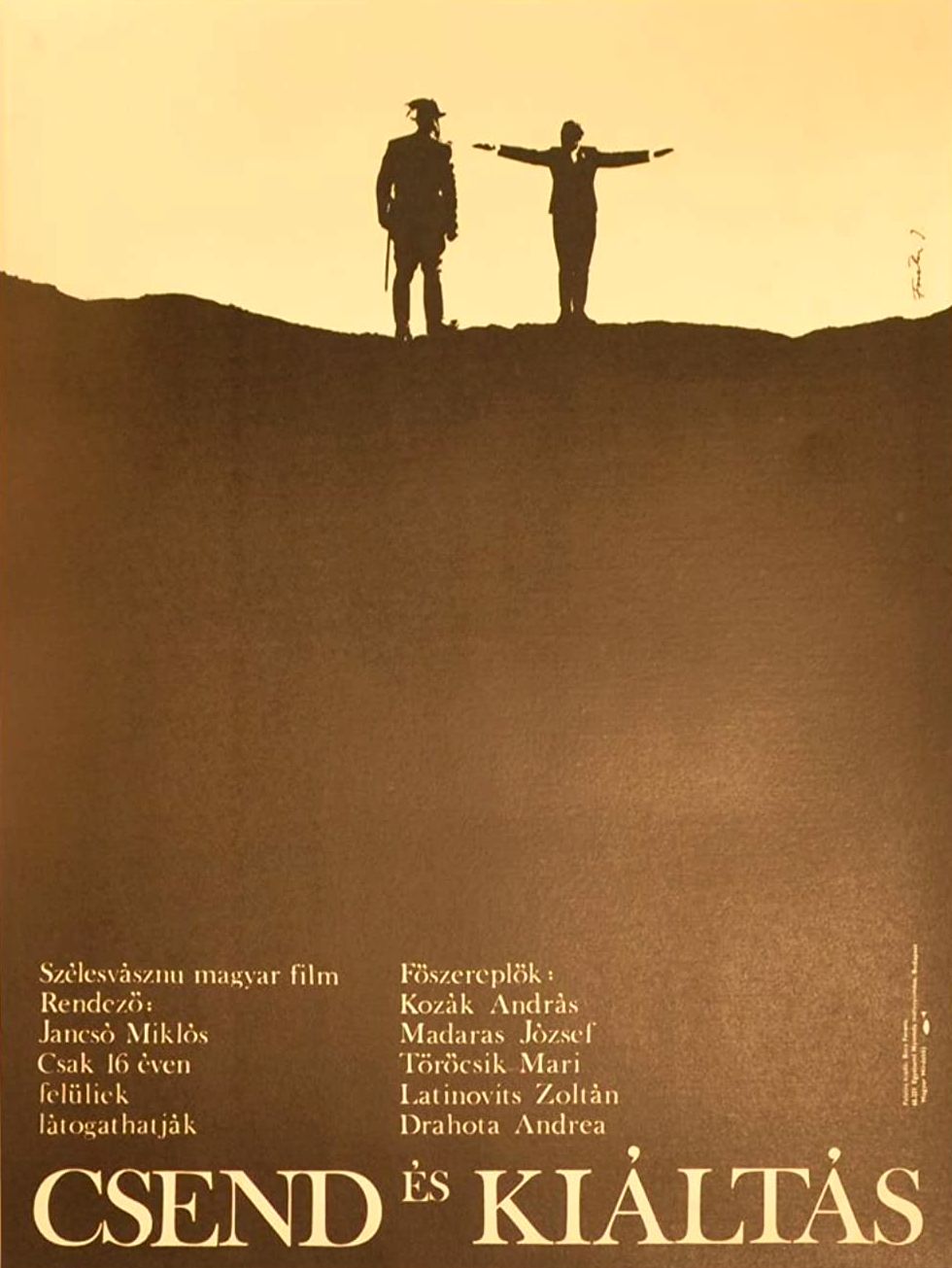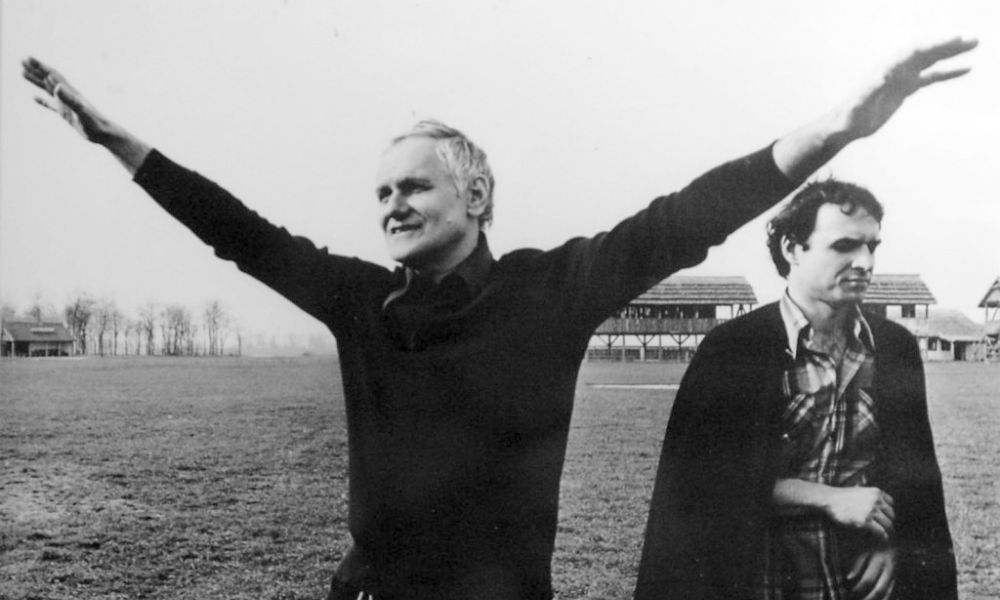"The films of Miklós Jancsó, from the mid-1960s to the mid-1970s, are brilliantly choreographed dramas. Jancsó traces the fight for Hungarian independence and socialism by using emblem and symbolism." - Ronald Bergan (Eyewitness Companions: Film, 2006)
Miklós Jancsó
Key Production Country: Hungary
Key Genres: Drama, Political Drama, Comedy, Satire, War Drama, Avant-garde/Experimental
Key Collaborators: Gyula Hernádi (Screenwriter), Zoltán Farkas (Editor), József Madaras (Leading Character Actor), Tamás Banovich (Production Designer), András Kozák (Leading Actor), János Kende (Cinematographer), Andrea Drahota (Leading Character Actress), Lajos Balázsovits (Leading Character Actor), Tibor Molnár (Character Actor), István Bujtor (Character Actor), Jácint Juhász (Character Actor), Mari Töröcsik (Leading Actress)
Key Genres: Drama, Political Drama, Comedy, Satire, War Drama, Avant-garde/Experimental
Key Collaborators: Gyula Hernádi (Screenwriter), Zoltán Farkas (Editor), József Madaras (Leading Character Actor), Tamás Banovich (Production Designer), András Kozák (Leading Actor), János Kende (Cinematographer), Andrea Drahota (Leading Character Actress), Lajos Balázsovits (Leading Character Actor), Tibor Molnár (Character Actor), István Bujtor (Character Actor), Jácint Juhász (Character Actor), Mari Töröcsik (Leading Actress)
"In contrast to other masters of the long take, Hungary's greatest modernist director, Miklós Jancsó, is not so much interested in the mimetic potential of this stylistic device as concerned with the possibilities of artificially constructed scenes, which means that naturalism is replaced in favor of ideology as in Red Psalm (1972), politics as in The Confrontation (1969), and mythology as in Electra, My Love (1974)." - Aleksandar Becanovic (501 Movie Directors, 2007)
"First manifest in The Round-Up (65), Jancsó’s boldly stylized film language appeared to be a synthesis of Antonioni (elegant widescreen compositions, austere allegorical landscapes), Bresson (impassive performers, exaggerated sound design), and Welles (convoluted tracking shots, intricately choreographed ensembles), even as his free-floating existential attitudes and “empty world” iconography evoked the theater of the absurd, albeit without the laughs. Jancsó’s subject or, rather, his prison, was history. His narratives recalled the literature of extreme situations-pivoting on cryptic betrayals, mapping the seizure of power, dramatizing the exercise of terror- and his politics were ambiguously left, perhaps crypto-Trotskyist." - J. Hoberman (Film Comment, 2006)

The Red and the White (1967)
"One of the most distinctive stylists to win international acclaim in the '60s, Miklós Jancsó may be seen both as a highly personal director and as an artist whose roots lie firmly in his country's history, geography and culture. In reinterpreting Hungary's past, he has developed a form of cinema that correlates, poetically and politically, to his conception of revolutionary class warfare." - Geoff Andrew (The Film Handbook, 1989)
"The language that Jancsó forged, drawn as much from dance choreography as conventional dramaturgy, remains utterly distinctive to this day. This is partly because he has had hardly any imitators (long-take maestros Theo Angelopoulos and Béla Tarr were closest to being Jancsó acolytes, but each had a powerfully independent vision of his own), but mostly because it was drawn from the very particular circumstances that he enjoyed as a Hungarian filmmaker. Not only was he able to make regular use of the puszta, that great featureless plain so characteristic of his country’s topography (and which has few equivalents elsewhere in Europe, making a British or French Jancsó scarcely imaginable), but as an internationally recognised artist in a Communist country he was granted access to dozens, sometimes hundreds and occasionally even thousands of extras – and horses – with which to populate his increasingly extravagant visions." - Michael Brooke (Sight & Sound, 2016)
"Among the most unusual feature film styles originating in Eastern Europe during the 1960s was that of Hungarian director Miklós Jancsó. His films were not narratives in the conventional sense, even though many depicted events in Hungarian history familiar, at least, to domestic audiences. There was little characterization, performance, or even spoken dialogue, as opposed to songs or declaimed words. The works were akin to folk ballets, with choreographed crowd movement, songs, dances, and patterned motion, all photographed by a constantly moving camera in lengthy takes." - Robert Sklar (Film: An International History of the Medium, 1993)
Selected Filmography
{{row.titlelong}}
GF Greatest Films ranking (★ Top 1000 ● Top 2500)
21C 21st Century ranking (☆ Top 1000)
T TSPDT R Jonathan Rosenbaum S Martin Scorsese
21C 21st Century ranking (☆ Top 1000)
T TSPDT R Jonathan Rosenbaum S Martin Scorsese
Miklós Jancsó / Favourite Films
L'Arrivée d'un train à la Ciotat (1896) August Lumière & Louis Lumière.
Source: Sodankylä Ikuisesti: Desert Island Film (1996)
L'Arrivée d'un train à la Ciotat (1896) August Lumière & Louis Lumière.
Source: Sodankylä Ikuisesti: Desert Island Film (1996)
Miklós Jancsó / Fan Club
Adoor Gopalakrishnan, Andrei Gorzo, Luc Moullet, Martin Scorsese, Márta Mészáros, Béla Tarr, Dina Iordanova, Pimpaka Towira, Rajko Grlic, Jorge García, Jurica Pavičić, Agnieszka Holland.
Adoor Gopalakrishnan, Andrei Gorzo, Luc Moullet, Martin Scorsese, Márta Mészáros, Béla Tarr, Dina Iordanova, Pimpaka Towira, Rajko Grlic, Jorge García, Jurica Pavičić, Agnieszka Holland.
"Fan Club"
These film critics/filmmakers have, on multiple occasions, selected this director’s work within film ballots/lists that they have submitted.
These film critics/filmmakers have, on multiple occasions, selected this director’s work within film ballots/lists that they have submitted.


